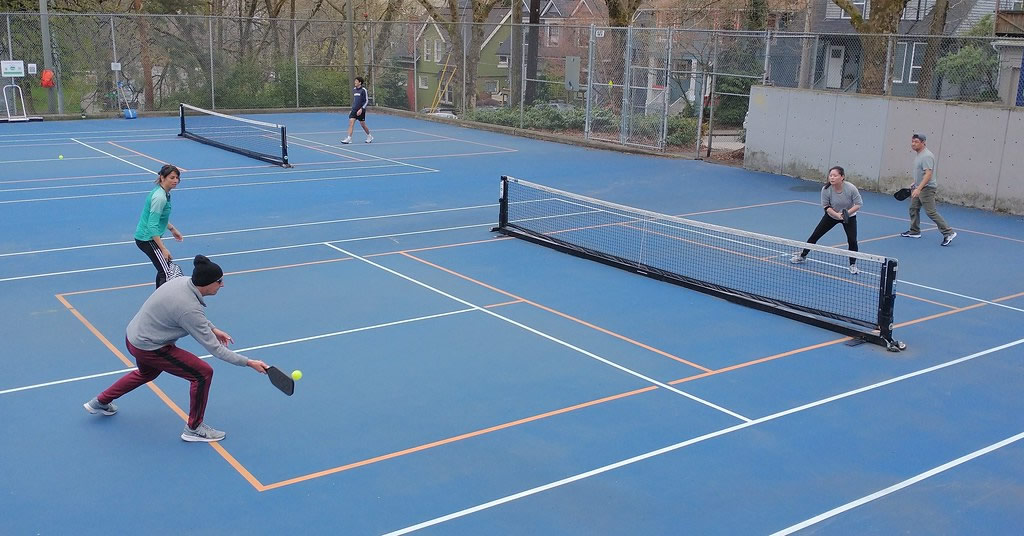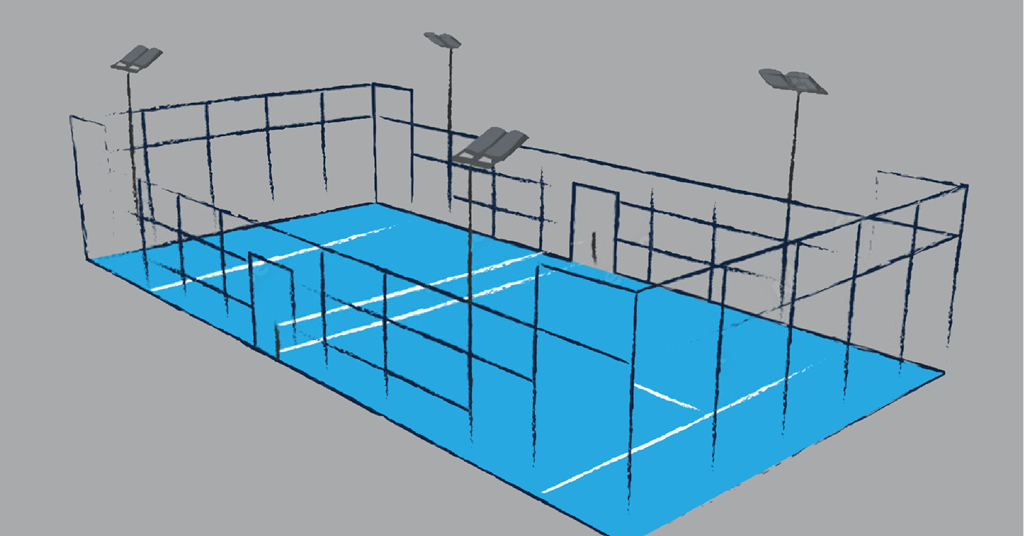Pickleball vs Padel Tennis
Pickleball and Padel tennis are two thriving racket sports that have gained immense popularity globally. While both sports share similarities with traditional tennis, they possess unique characteristics that set them apart. In this comprehensive comparison, we will explore the pros and cons of pickleball and Padel, examining various aspects such as court dimensions, equipment, rules, gameplay, accessibility, and the global reach of each sport. While recognizing the merits of both sports, we recommend Padel for its dynamic gameplay, strategic depth, and expanding worldwide community.
1. Court Dimensions
The court dimensions of Pickleball and Padel are distinct, each offering its own advantages and challenges. Pickleball courts measure 20 feet wide and 44 feet long (6 metres by 13.4 metres ), divided into two equal halves by a net. The smaller court size promotes quick reflexes and agility, allowing for fast-paced gameplay. Padel courts, on the other hand, measure 33 feet wide and 66 feet long (10 metres by 20 metres) and feature glass walls and wire mesh fences. These walls add a unique element, enabling players to use them strategically and creating exciting opportunities for rebounds and creative shots.


2. Equipment
The equipment used in Pickleball and Padel differs in terms of paddles and balls. Pickleball paddles are typically made of wood, composite materials, or graphite. These paddles are smaller and lighter than traditional tennis rackets, providing better control and maneuverability. The perforated plastic ball used in pickleball is similar to a wiffle ball, offering a slower pace and allowing longer rallies. Padel tennis paddles, on the other hand, are solid and often perforated to reduce wind resistance. The balls used in Padel are similar to tennis balls but slightly softer, ensuring a manageable pace while maintaining the ability to generate power.
3. Rules and Gameplay
Pickleball and Padel have distinctive rules and gameplay mechanics that contribute to their individual charms. In Pickleball, the serving team must make an underhand serve diagonally to the opponent’s service court, ensuring the ball bounces once on the receiving side. Players engage in volleys, aiming to keep the ball in play without letting it touch the ground. Padel allows for an overhand serve, and the ball is allowed to hit any part of the court before the receiver returns it. The presence of walls in Padel adds an exciting tactical dimension, allowing players to use them for strategic shots and rebounds.
Pickleball emphasizes quick reflexes and agility due to its smaller court size, whereas Padel combines elements of tennis and squash, showcasing a balance of power, finesse, and strategy. Padel’s unique gameplay, with the use of walls and the ability to control the ball against them, adds depth and excitement to the sport, allowing players to develop a diverse range of shots.
4. Accessibility and Popularity
Accessibility and popularity play a significant role in comparing Pickleball and Padel. Pickleball has gained widespread accessibility, particularly in North America, due to its low entry barrier. The smaller court size, lighter paddles, and slower pace make it easy for beginners to grasp and enjoy the game. Furthermore, many recreational facilities and community centres now offer pickleball courts, making them readily available to a broader audience.
Padel, though relatively newer, is experiencing rapid growth globally. Originating from Mexico and Spain, Padel has gained traction in Europe and South America. It boasts professional tournaments, attracting top athletes and captivating audiences worldwide. While Padel may have a higher entry barrier due to larger court dimensions and specialized facilities, its unique blend of tennis and squash elements has attracted players seeking a new and challenging experience.
5. Community and Global Reach
Both Pickleball and Padel have passionate communities, but Padel has shown significant growth and global reach. Pickleball, originating from the United States, has a strong presence in North America, with thousands of dedicated players. The sport is known for its inclusive nature, attracting players of all ages and skill levels. However, Padel’s community has expanded rapidly, with clubs, leagues, and training facilities emerging worldwide. Professional tournaments and a growing competitive circuit have solidified Padel’s status as a recognized sport on the international stage.
6. Pros and Cons
Pickleball and Padel each have their pros and cons. The smaller court size of Pickleball allows for faster gameplay, making it an excellent option for players who enjoy quick reflexes and agility. It is also highly accessible, with a large community and recreational facilities dedicated to the sport. However, the limited court space may restrict shot variety and strategic depth.
Padel, on the other hand, offers a larger court size and the addition of walls, allowing for exciting rebounds and strategic play. The unique gameplay elements of Padel, with its blend of tennis and squash, provide a dynamic and engaging experience. However, the sport requires specialized court facilities.
Conclusion
In conclusion, both Pickleball and Padel are captivating racket sports with their own strengths and appeal. While pickleball boasts accessibility and a dedicated community, Padel’s dynamic gameplay, strategic depth, and expanding global reach make it a compelling choice. The larger court dimensions, unique equipment, and the use of walls contribute to an exciting and versatile playing experience in Padel. As the sport continues to gain popularity, it offers players a fresh and engaging alternative that combines the best of tennis and squash.
Note: Melville Tennis Centre provides Padel tennis court hire in Perth.